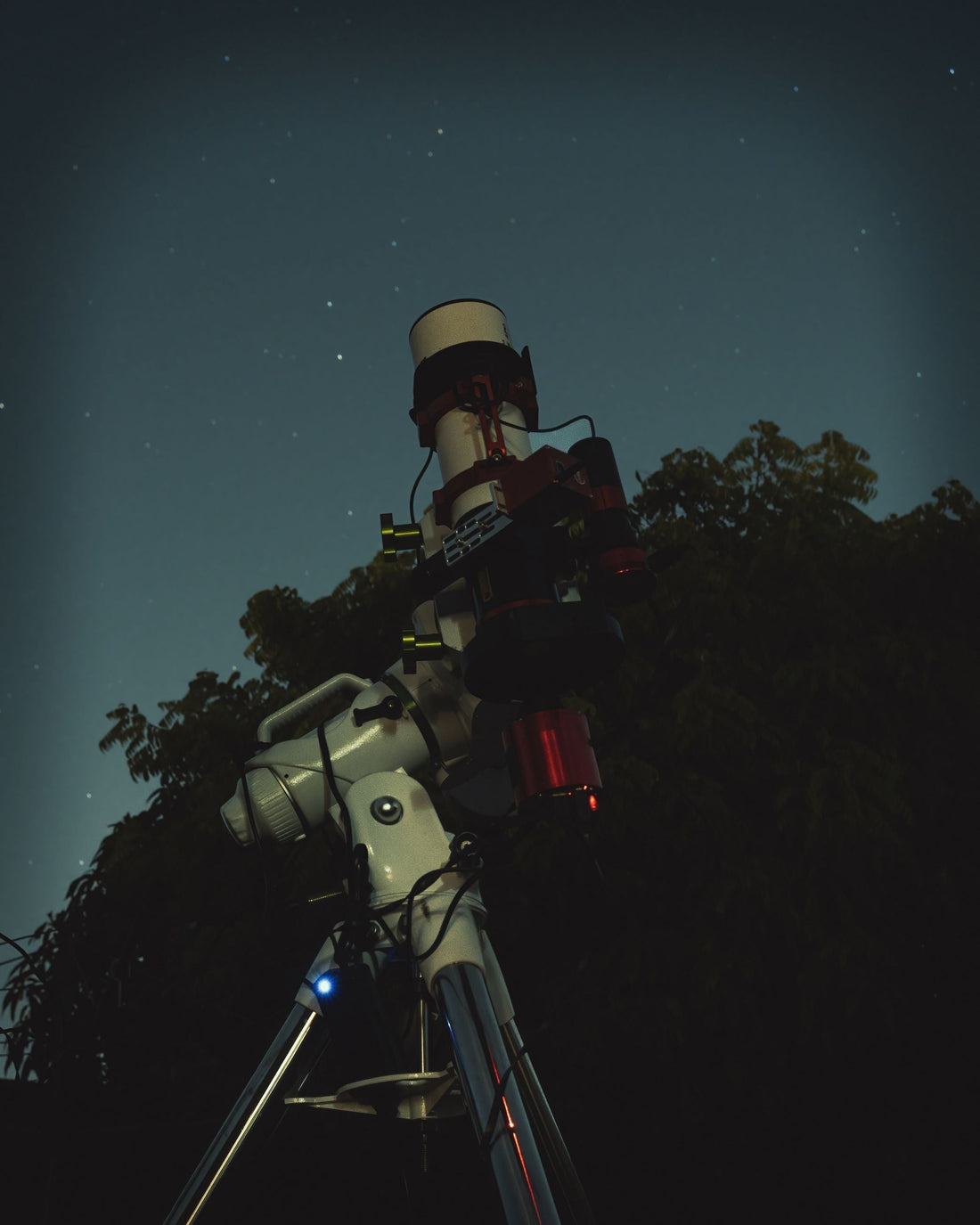
Celestial Firestorm: Photographing the Orion Nebula from My Backyard
Share
There’s something humbling about staring into the vastness of space, knowing that what you see has existed for millions of years. Capturing it? That’s an entirely different challenge.
One cold, quiet night, I set out on an ambitious mission—to photograph the Orion Nebula (M42) from my own backyard in Sydney. No professional observatory, no remote dark-sky retreat. Just me, my camera, and the endless sky.
The Challenge: Battling Light Pollution & Equipment Limitations
Living in a city, I knew the biggest obstacle would be light pollution. The artificial glow from streetlights and buildings washes out the delicate details of deep-space objects. To overcome this, I used a light pollution filter and carefully adjusted my camera settings to enhance contrast while minimizing noise.
Then came the technical challenge—astrophotography isn’t just about pointing a camera at the sky. I needed precise tracking to compensate for the Earth's rotation. Using a star tracker, I could take long-exposure shots without star trails, allowing me to capture fine details within the nebula.
The Process: Patience, Precision, and Perseverance
Capturing deep-space images requires meticulous preparation:
-
Camera & Lens: I used a dedicated astrophotography camera with a telescope setup, perfect for high-resolution shots.
-
Stacking Exposures: Instead of a single shot, I took dozens of long-exposure images, later stacking them in post-processing to reduce noise and reveal intricate details.
-
Guiding & Calibration: A guide scope and software corrections helped keep the nebula perfectly framed.
Hours passed, and so did clouds—testing my patience, as waiting for the perfect clear moment is part of the experience. But when the final image started taking shape, all the effort became worth it.
The Final Image: A Celestial Masterpiece
The result? A breathtakingly detailed image of the Orion Nebula, glowing in hues of pink, blue, and fiery red. This stellar nursery, located 1,344 light-years away, is where new stars are born—its swirling clouds of gas and dust illuminated by young, massive suns.
The moment I processed the final image, I felt an overwhelming sense of awe. This wasn’t just a photograph—it was a window into the universe’s grand design.
Why Astrophotography? A Reminder of Our Place in the Universe
Astrophotography is more than just a hobby; it’s a way to connect with something greater. Every time I capture a deep-space object, I’m reminded of how small we are in the grand scheme of things—and yet, how powerful our curiosity can be.
With this image, I hope to inspire others to look up, embrace the unknown, and find their own sense of wonder in the night sky. Whether from a professional observatory or your own backyard, the cosmos is always waiting to be explored.
Final Thoughts: Capturing Your Own Piece of the Universe
You don’t need the most expensive gear or a remote dark sky to start astrophotography. With patience, the right setup, and a little perseverance, you, too, can capture the wonders of space from your own backyard.
If you’re inspired by this journey and want to bring the magic of the cosmos into your home, explore my limited edition astrophotography prints, available now. Each image tells a story—one that spans across time and space.
🔭 Shop the Collection:
